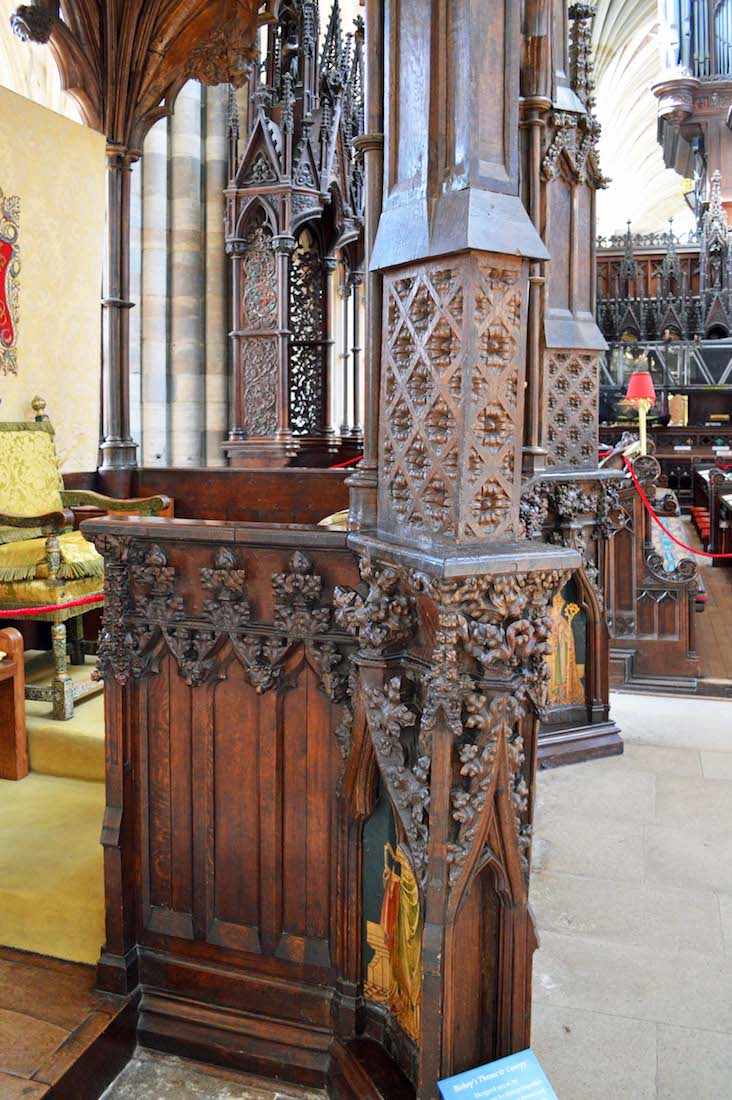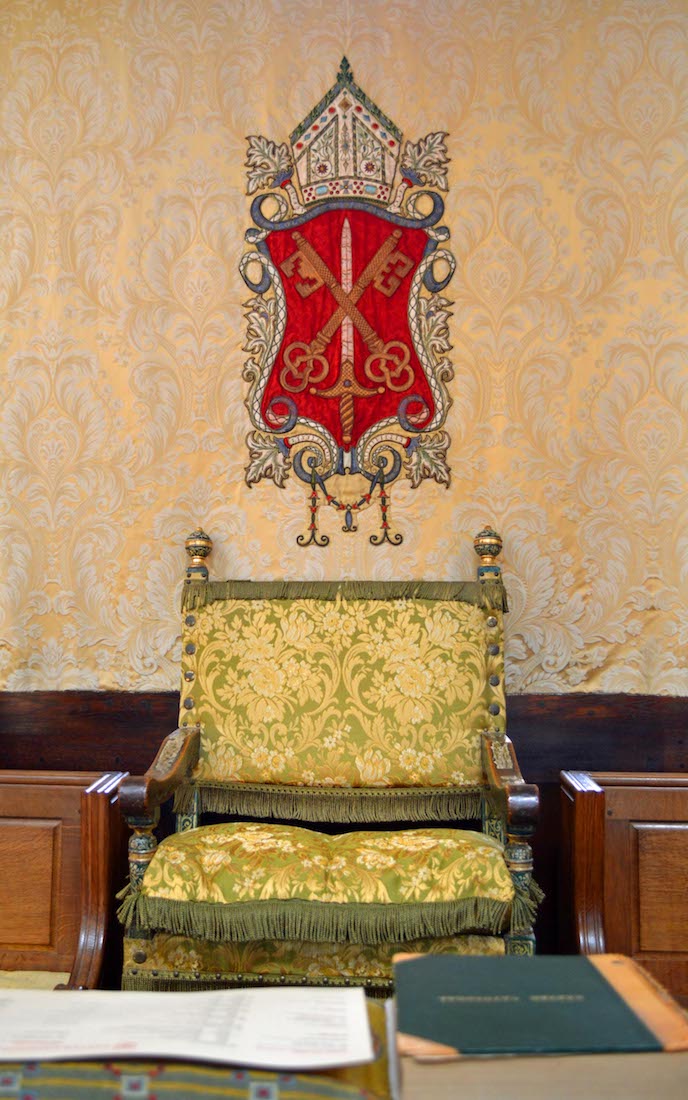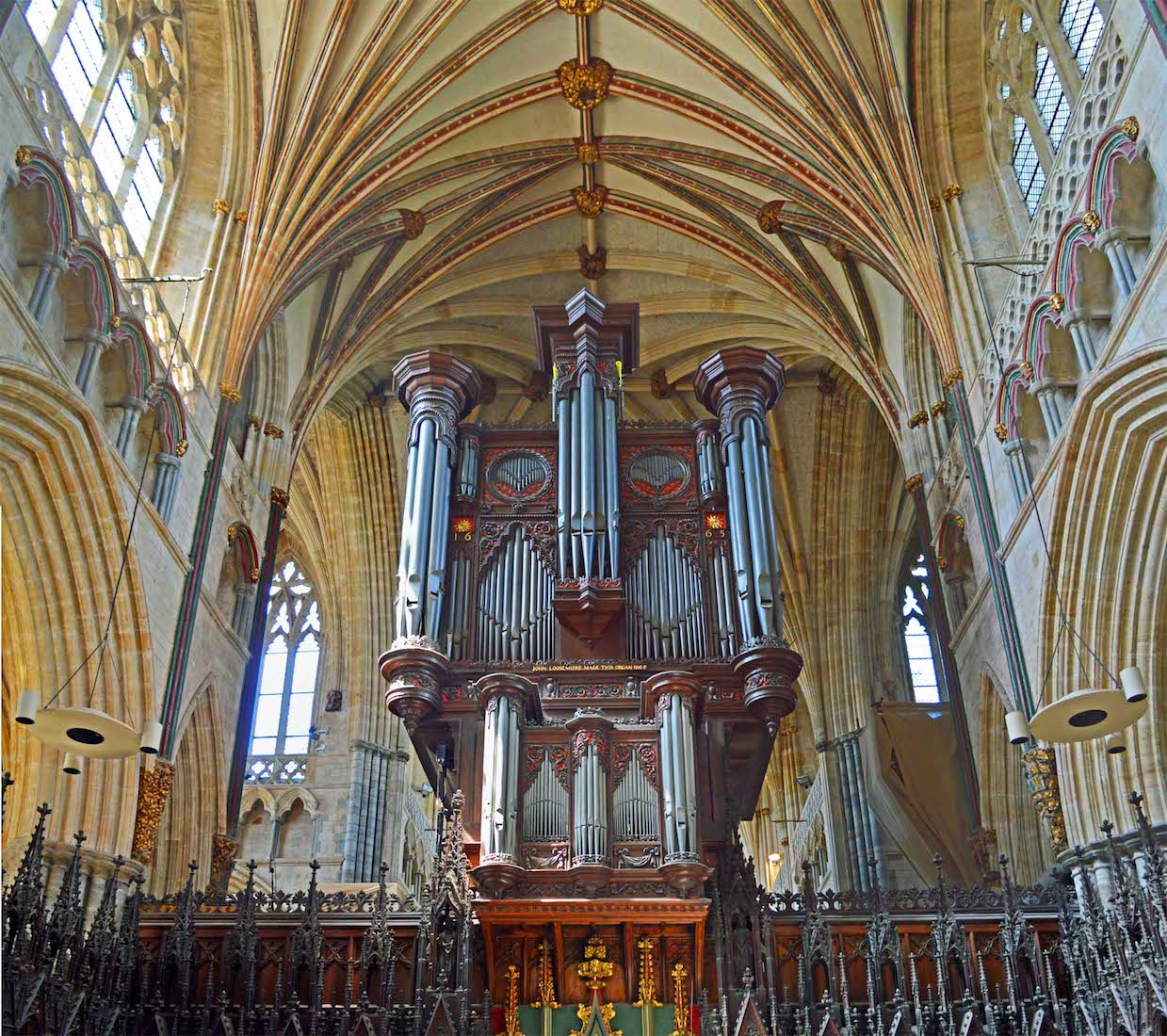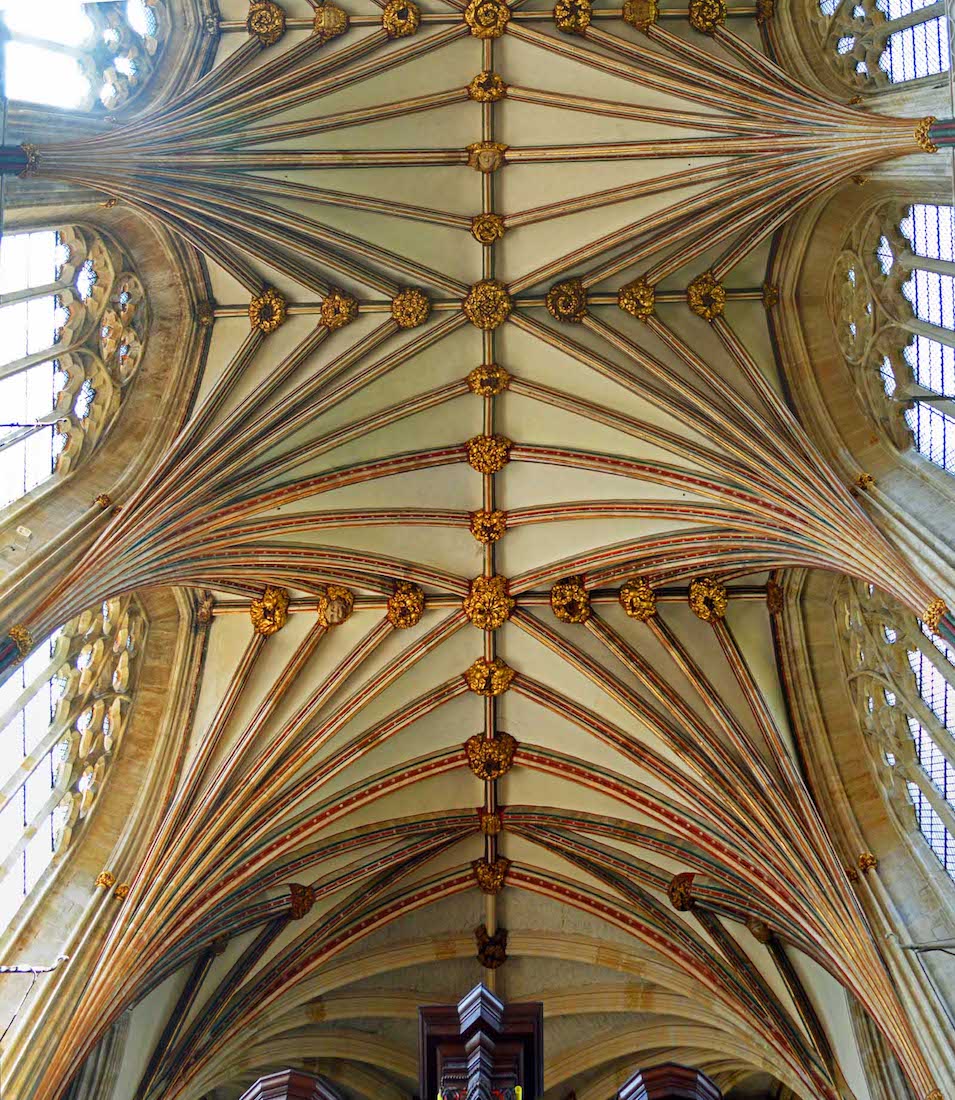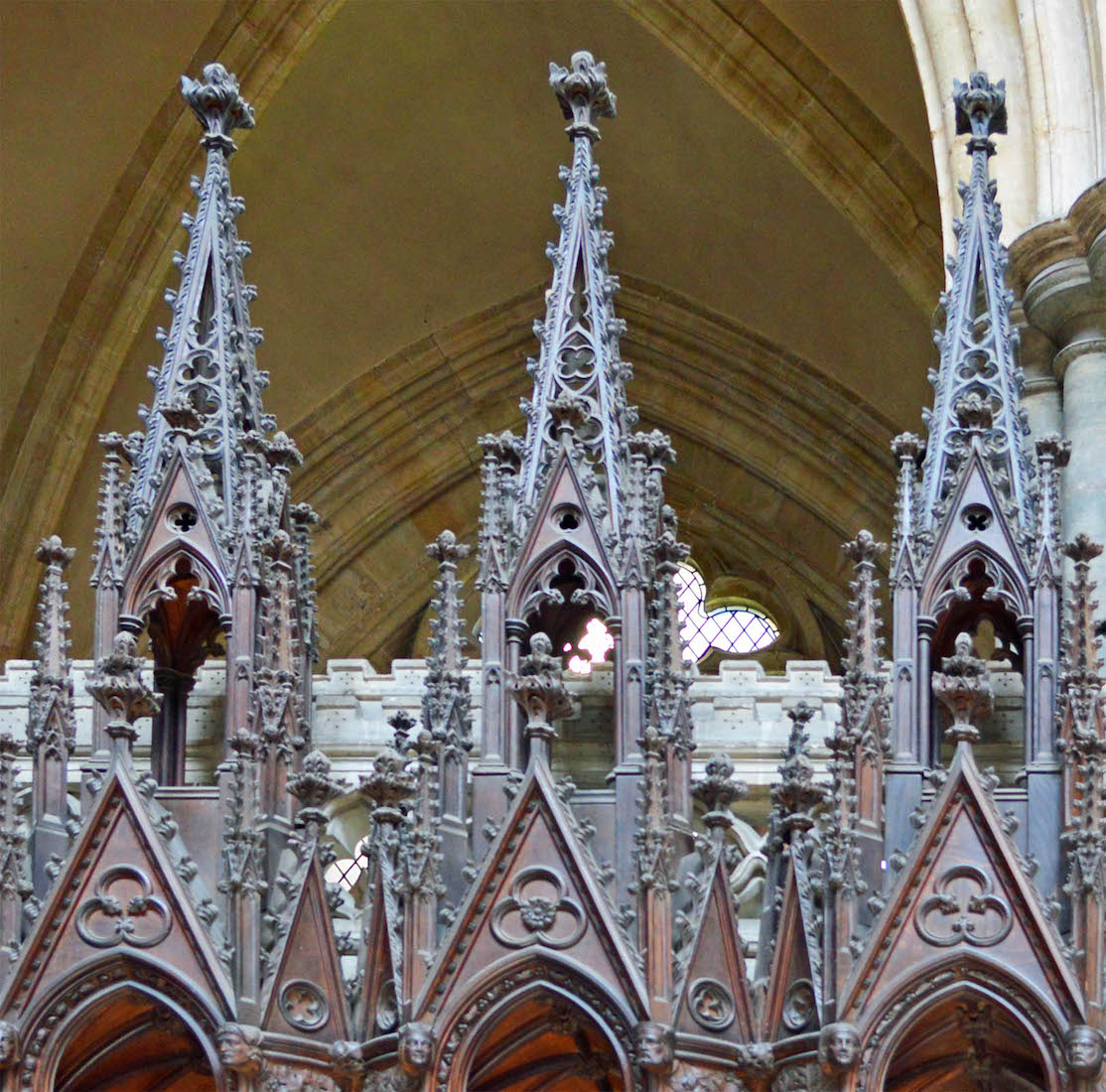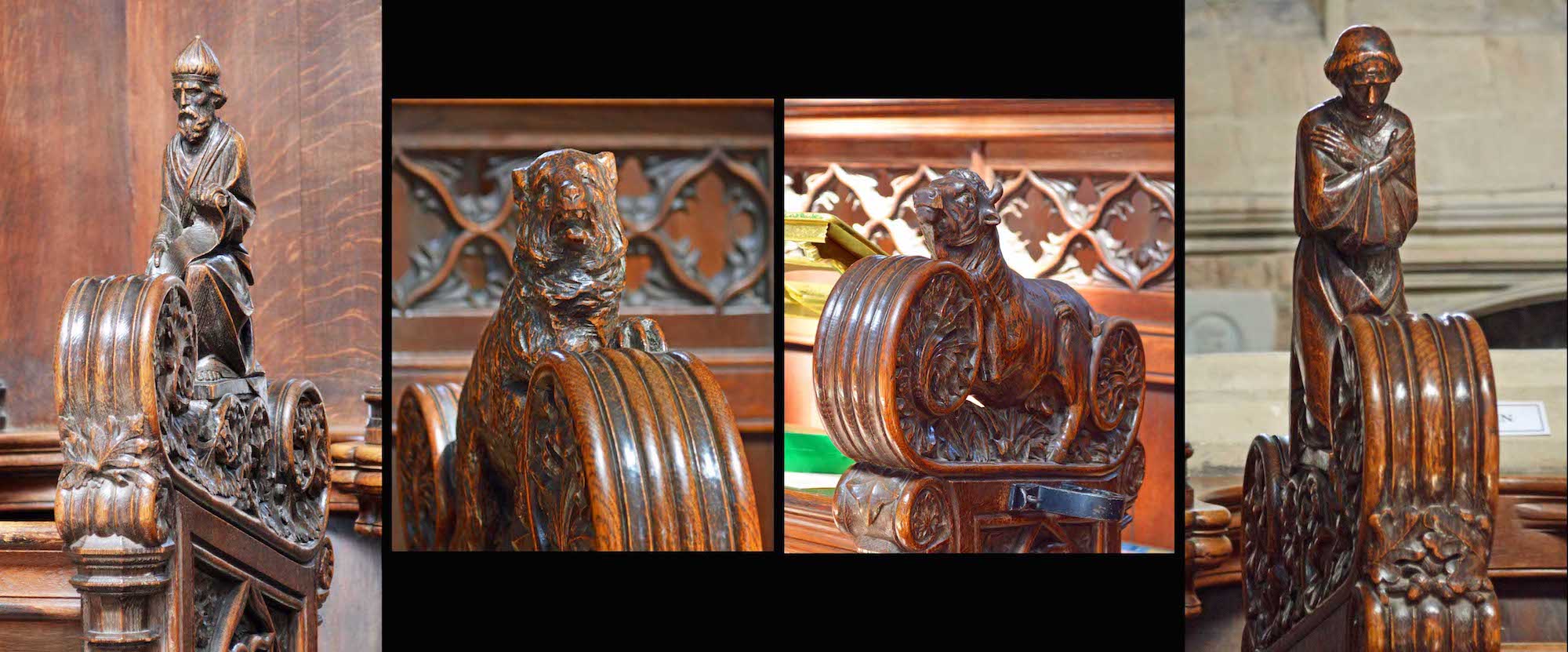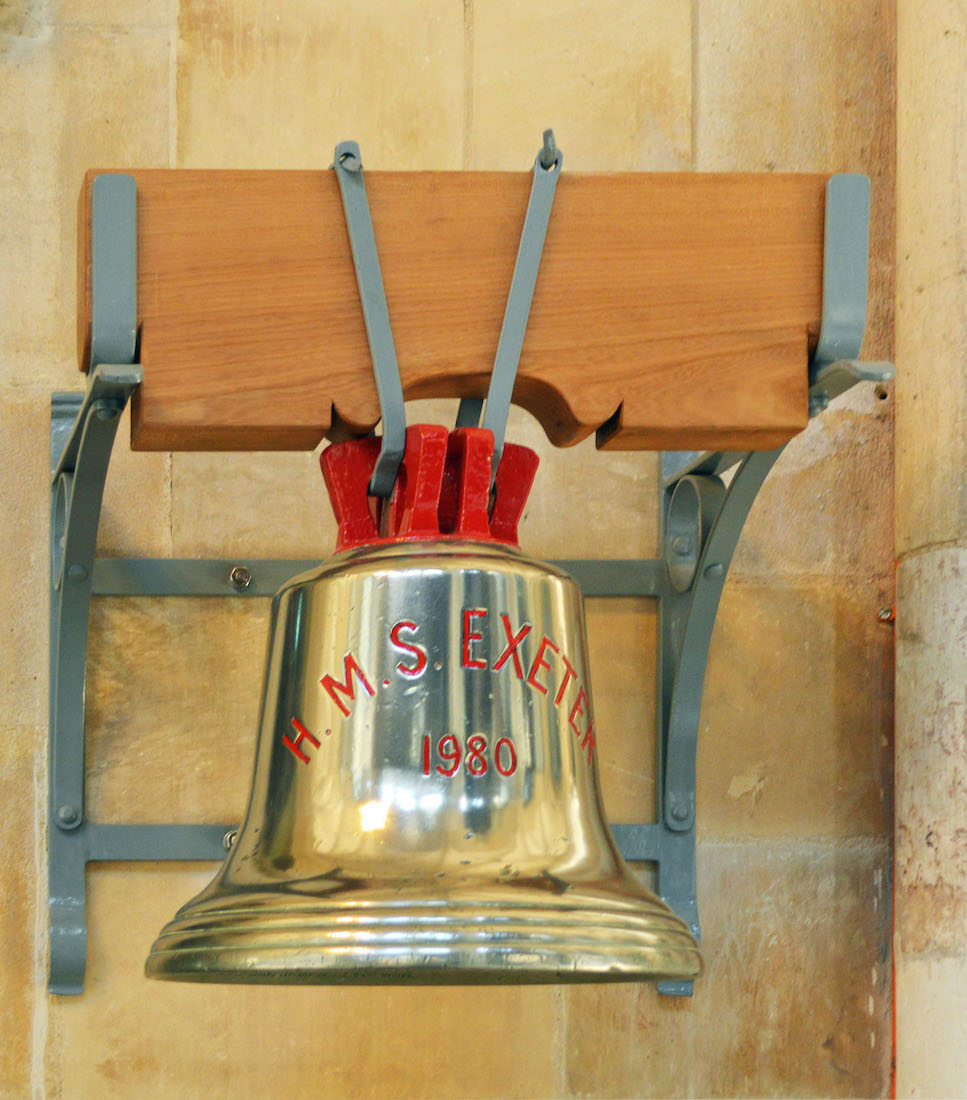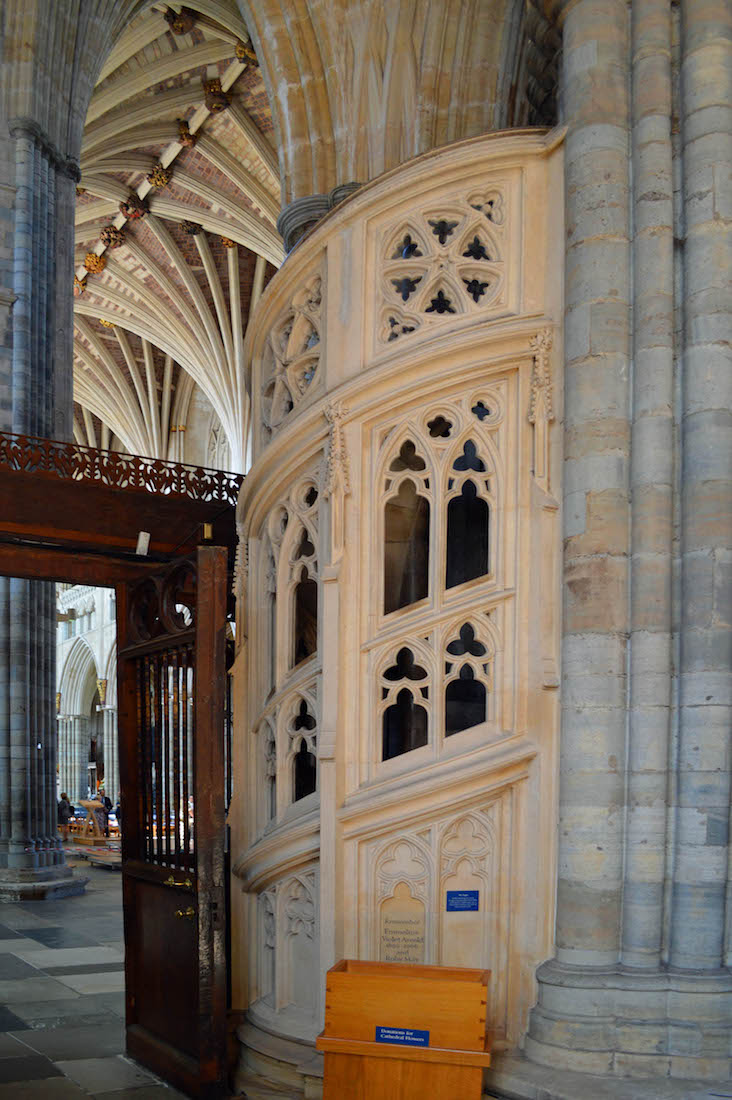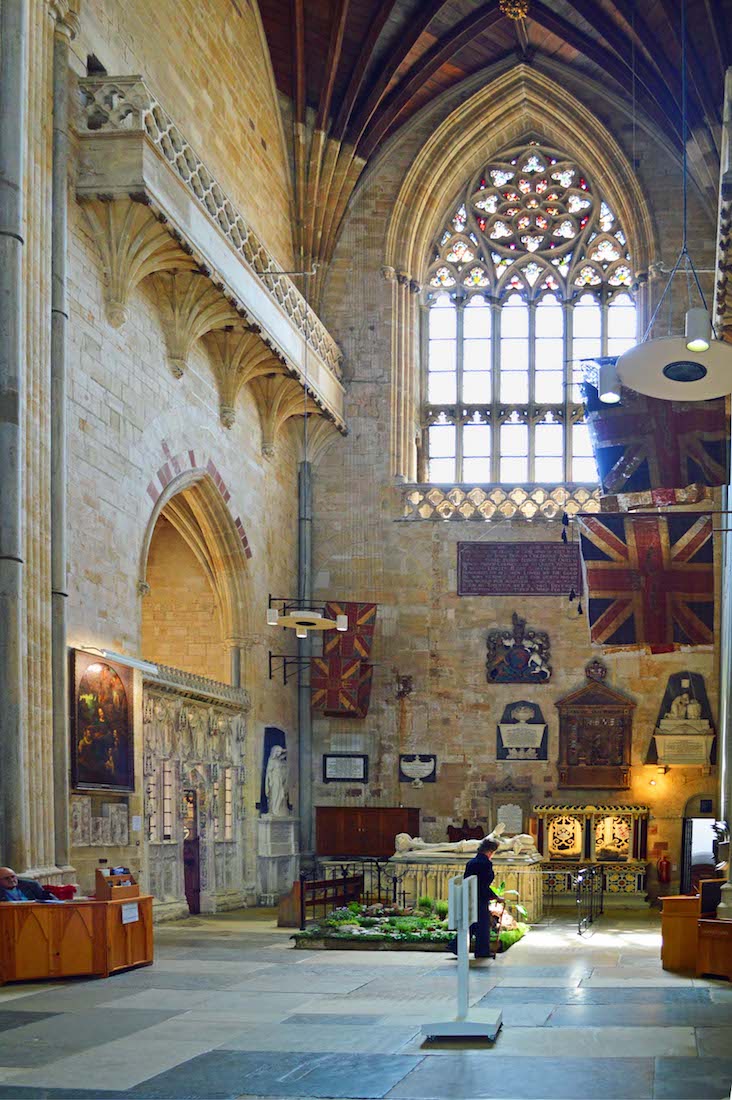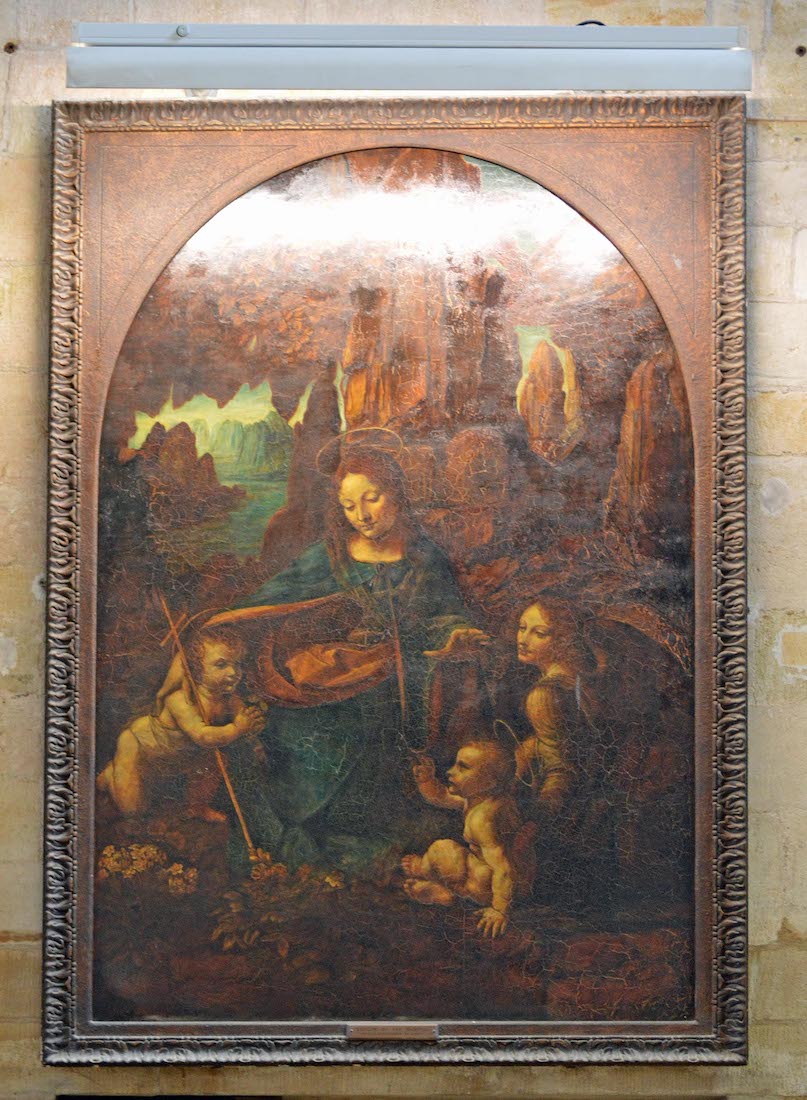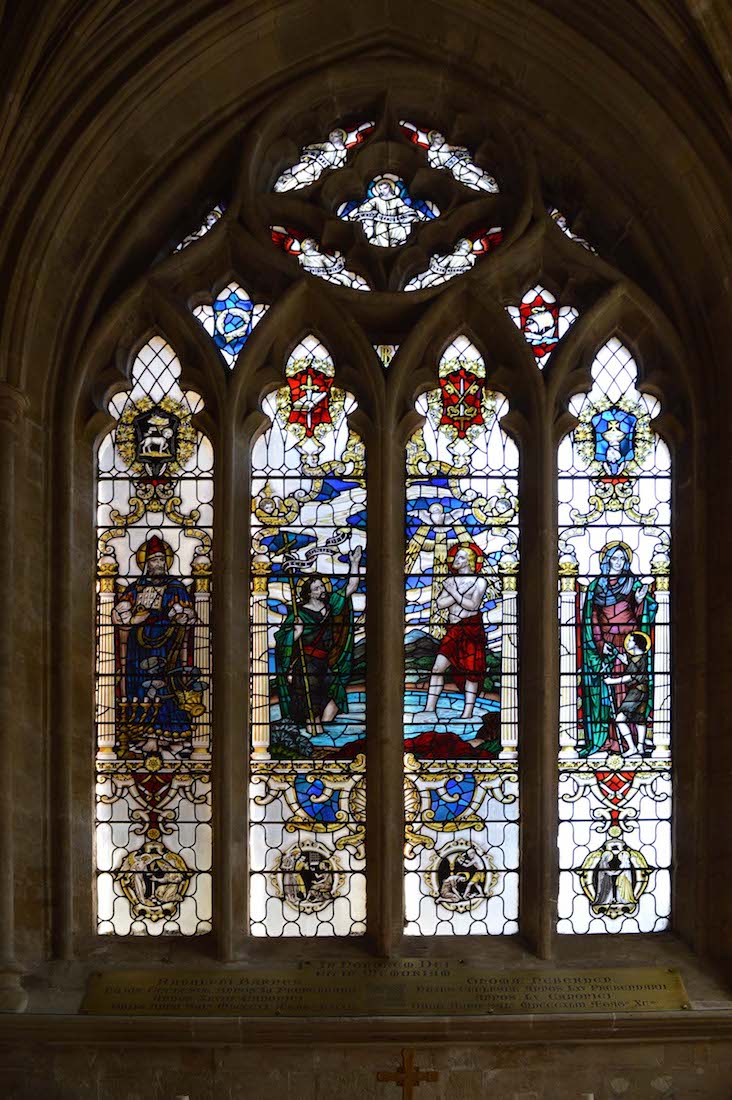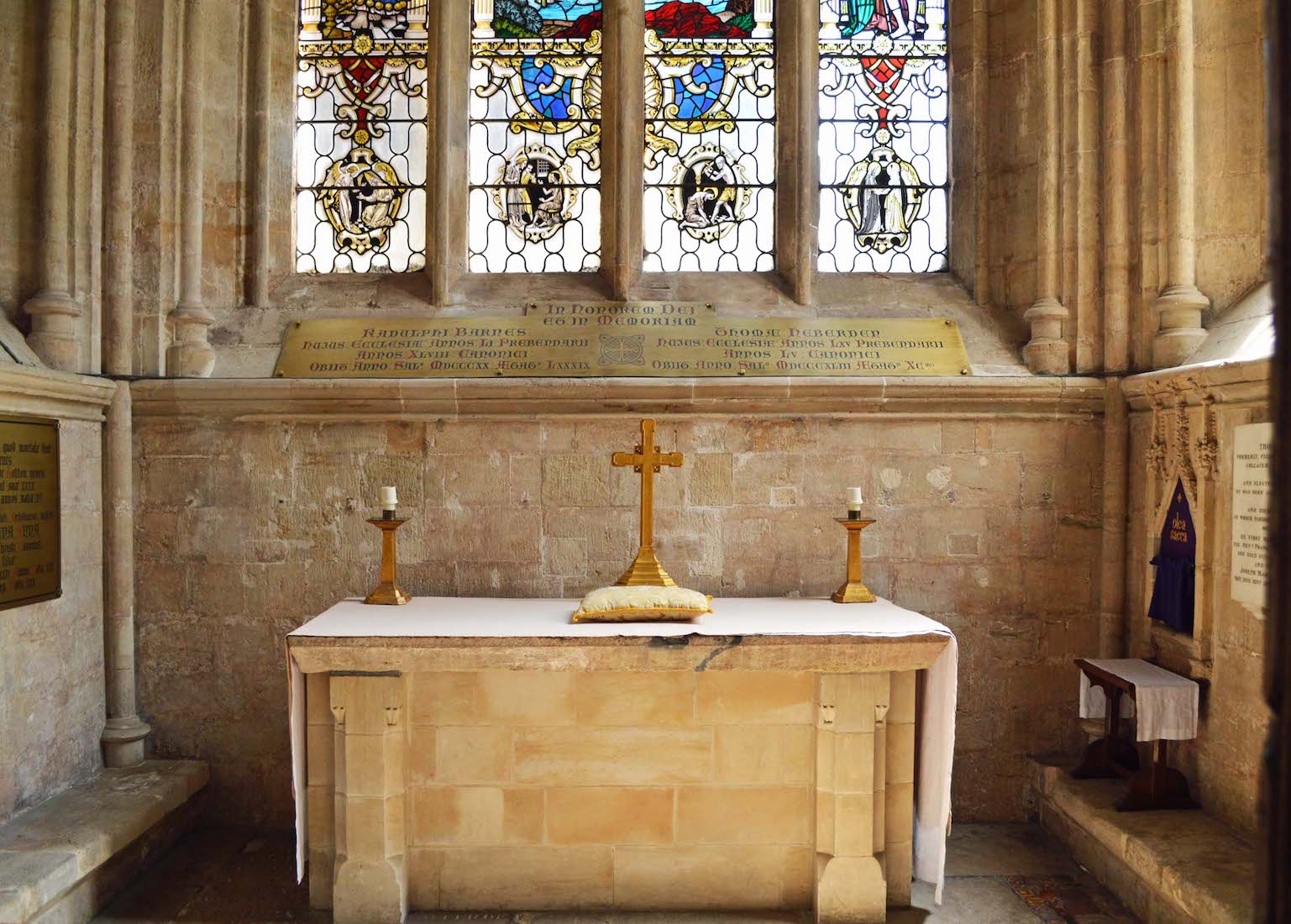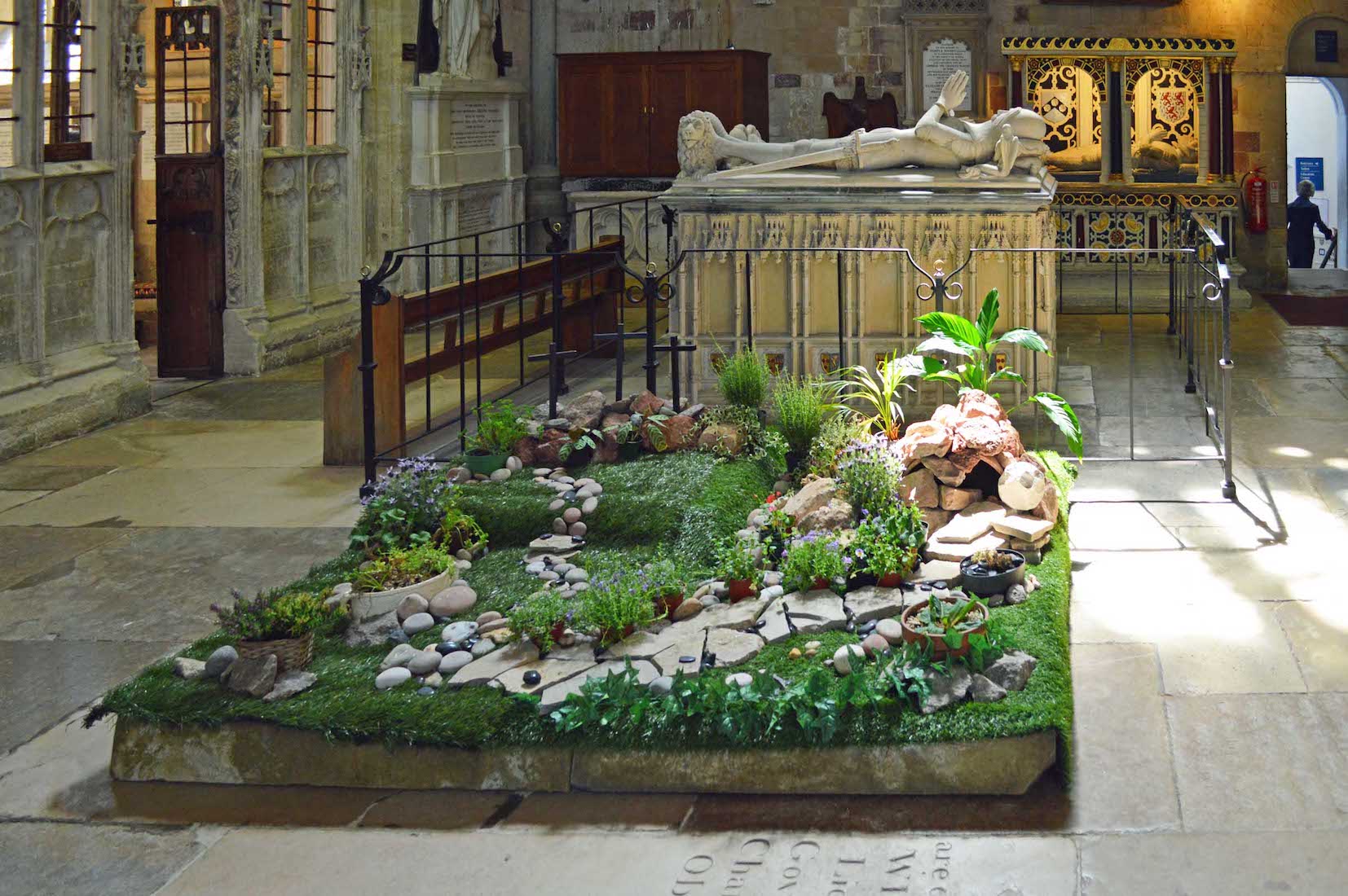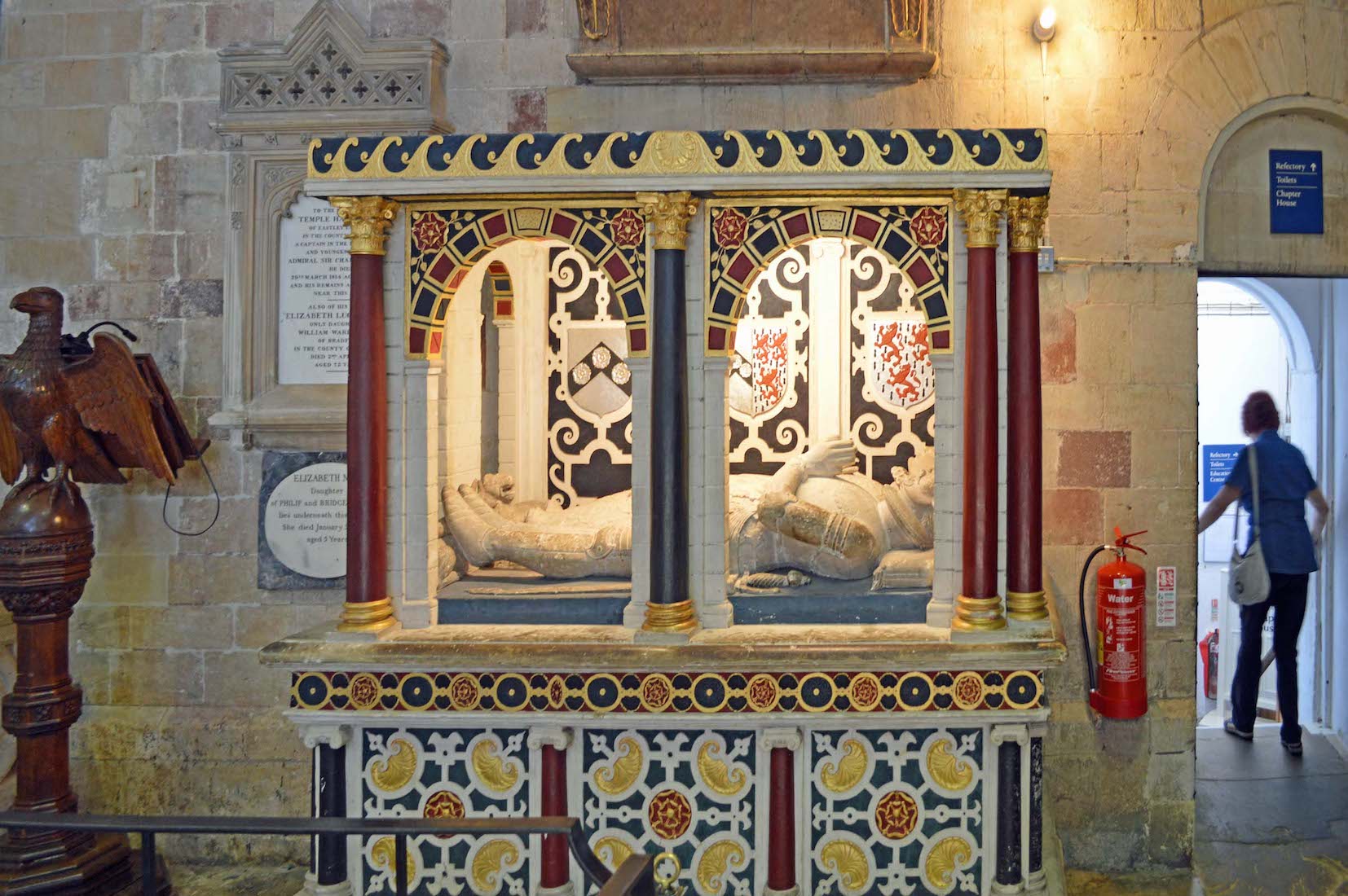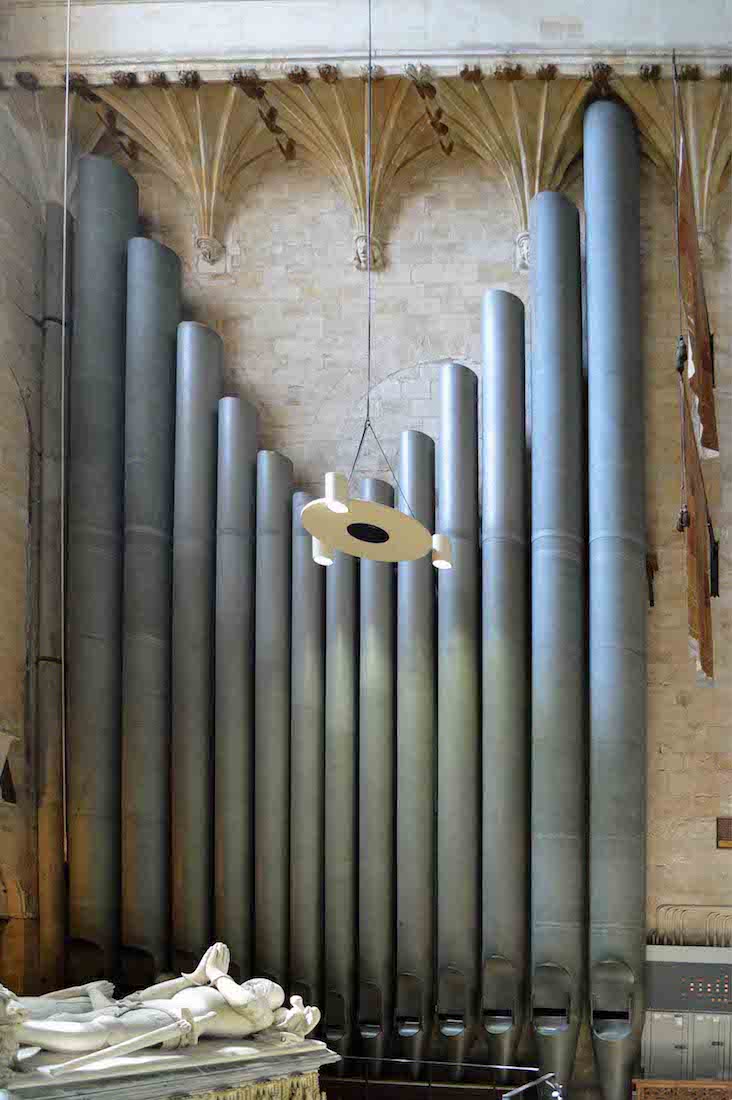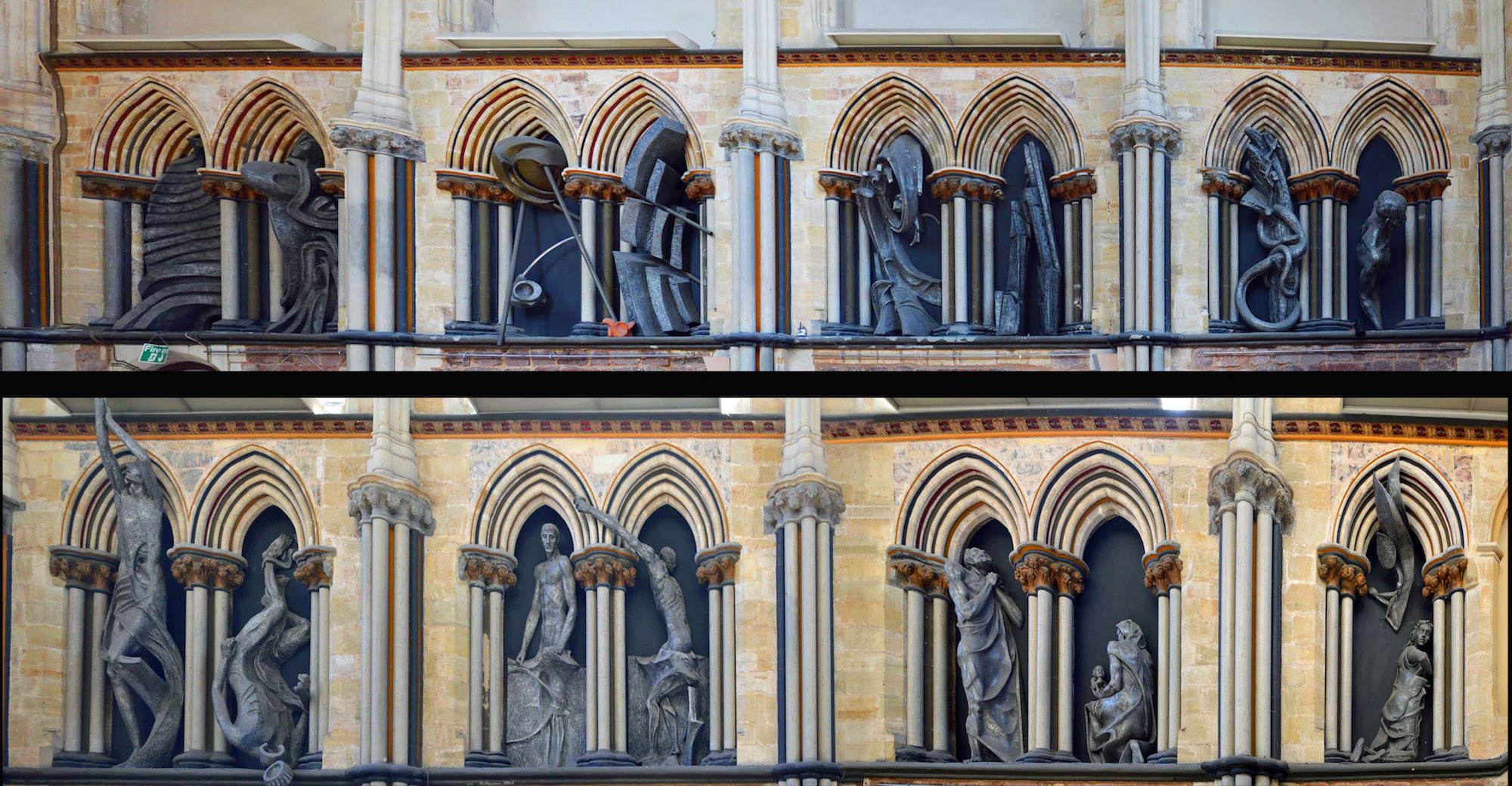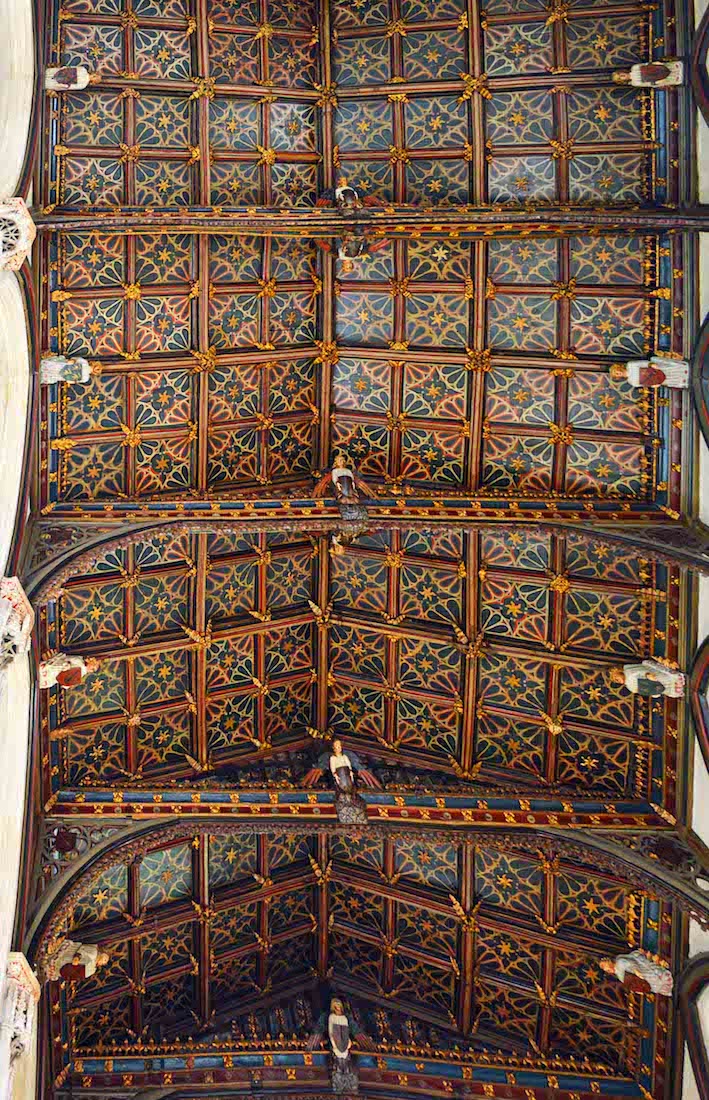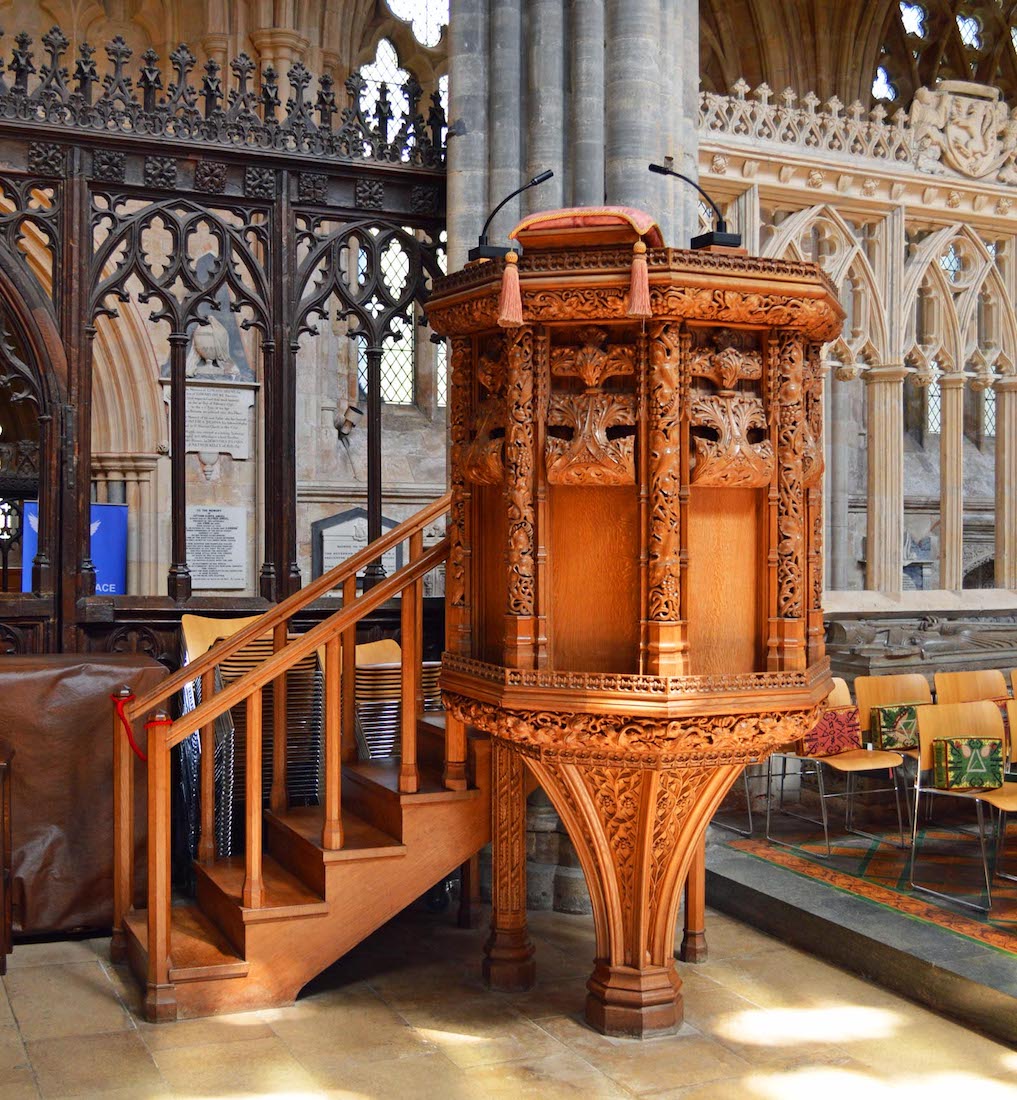
Back behind is the finely carved quire pulpit, supported on its stylishly decorated central stalk. PLAN
102. CATHEDRA
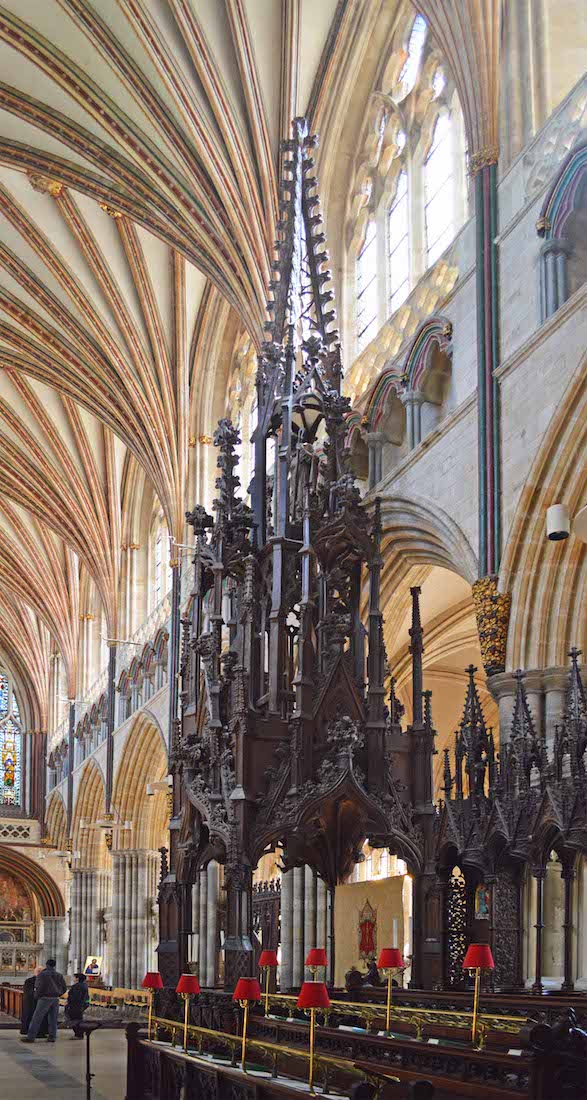
The oak canopy over the bishop's throne stretches 60 feet high and was begun in 1312, using wood from the bishop’s estates. It is considered a fine example of English woodwork. In Latin (and Greek) the word for seat or throne is cathedra, and it is from here that the term ‘cathedral’ is derived.
103. CATHEDRA DETAIL
A cathedral is a church in which the bishop’s throne is sited. This Cathedral (and cathedra!) is very large and grand, but some cathedrals and cathedra are surprisingly small and unassuming.
104. BISHOP’S CHAIR
In most cathedrals, the cathedra is an ancient, ornate but uncomfortable throne. Here the old structure houses a comfortable chair. What a good idea! The crest is interesting. We have commented already that Exeter Cathedral is the Cathedral Church of St Peter. The traditional crest for St Peter features the two keys (the Keys of the Kingdom), and an inverted cross, alluding to the tradition that Peter was crucified upside down. Here the cross is replaced by a sword. There is a Bible reference to Peter using a sword to cut off the ear of the servant of the High Priest during the arrest of Jesus (Jn 18:10) – hardly an explanation!
105. ORGAN
The main organ at Exeter Cathedral is a particularly fine example of English organ-building. In 1665 local organ builder John Loosemore created what has become one of the most distinctive and striking organ cases ever built. In over three hundred years the organ has been expanded and updated to meet the ever changing musical demands of a living Cathedral, from the expansion and raising of Loosemore’s case and the moving of the impressive 32’ pipes to the South Transept, to the creation of an entirely new section of the organ in the Minstrels’ Gallery.
106. QUIRE VAULTING
The organ soars upwards to the impressive roof of the quire.
107. QUIRE STALLS DETAIL
The quire stalls were made by George Gilbert Scott in the 1870s. In reconstructing the quire stalls, Scott took great care to preserve the unique collection of 13th century misericords, some of which are on public view.
108. QUIRE FIGURES
The early sculptors and wood-carvers who created the cathedrals often seemed to have a free hand, and could let their imaginations run riot. So there are figures like this demure monk(?) in prayer, but also ...
109. QUIRE AISLE BELL
We now return to the West end of the South quire aisle. Here we find a brass bell inscribed ‘HMS Exeter 1980’. There have been five Royal Navy ships named ‘Exeter’: 1678 –1697, ca 1740 – 1763, ? – 1784, 1929 – 1941, and 1978 – 2009. None of these dates correspond easily to the 1980 on the bell.
110. ORGAN SPIRAL STAIR
As we leave the Quire aisle to move into the South transept, we pass this neat little spiral staircase which gives access to the organ.
111. SOUTH TRANSEPT
The South transept is small and a little cluttered. In the centre is a recreation of the Tomb Garden, where Christ was buried. Behind this are two tombs. The nearest is that of Hugh Courtenay, 2nd Earl of Devon (1377) and Margaret Bohum (1391). Their son became Archbishop of Canterbury and arranged their burial in the Cathedral.
112. TRANSEPT PAINTING
On the East wall of the transept hangs a copy of the painting ‘Virgin of the Rocks’ by Leonardo da Vinci. There are two original paintings of this name, one in the Louvre, and the other in the National Gallery. Next to the painting is the entry to the Chapel of St John the Baptist.
113. ST JOHN CHAPEL WINDOW
This is one of the early chapels in the Cathedral dating from 1310. It was of course part of one of the early towers. The window shows Jesus being baptized by John the Baptist.
114. ST JOHN CHAPEL ALTAR
The Chapel of St John the Baptist has a very simple altar with a cross and two candles. The Chapel is used today for services of prayer and healing.
115. TRANSEPT TOMB GARDEN
Here is a closer view of the Tomb Garden, and behind, the tomb and effigies of Hugh Courtenay, 2nd Earl of Devon (1377) and Margaret Bohum (1391).
116. GILBERT TOMB
Against the South wall of the South transept is the rather more elaborate tomb and effigies of Sir John Gilbert (1596) and his wife. Note the squirrel at their feet. There is in fact a fine Gilbert spoon dated 1596 which has a squirrel on the handle. In the corner, a doorway leads out of the Cathedral and through to the chapter house.
117. TRANSEPT ORGAN PIPES
Before we leave the transept, we notice on the adjacent West wall this set of very large organ pipes,
119. SCULPTURE DETAILS
There is a little name plate under each set of sculptures with red print on a clear background. So here, the left pair of figures carry the title: Nativity. He shall be great and shall be called the Son of the Highest. And at right we read: Eden The Lord God formed man of the dust of the ground.
120. CHAPTER HOUSE ROOF
The ceiling of the Chapter House is beautiful – intricate and colourful, with little figures looking down.


